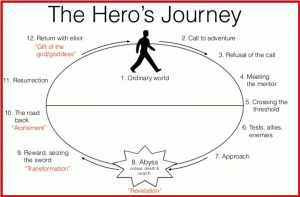Not every pitch or presentation ends in a signed contract. However you must ask for some next step, otherwise you have just invested a lot of time and energy delivering an informative talk. With so many deals ending in “no decision” today, you can’t afford to waffle when it comes to this critical step in moving your sale forward!
Unfortunately, many salespeople leave money on the table by delivering a vague call-to-action, or too often, no next steps at all. Successful salespeople know precisely want they want their prospect to do at the end of their pitch. It doesn’t pay to be shy in this regard, or to assume the next step is obvious. By applying the following keys to your call-to-action, you will greatly increase your chances of success.
The 6 Keys to a Great Call-to-Action:
Keep it simple.
Many times salespeople offer next steps that are too complicated or as inviting as a visit to the dentist’s office. Don’t overwhelm your prospect at the home stretch with a complex, multi-stage, call-to-action. If possible, make the next step a single, simple action your prospect can easily remember and take.
For example, “To ensure you get the best rates, I recommend signing this document today so we can move forward.”
Be specific.
Vague requests produce vague results. Be very clear about what you want your prospect to do. For example, instead of the more general, request for a recommendation, ask for “a recommendation to the board to move forward with our proposal by the end of the quarter.”
Offer proof.
If your call to action is vague, such as “we hope you’ll take this under consideration,” how will you know that your prospect has actually taken the action?
Come up with a call-to-action that can be validated after it’s accomplished. For example, an email recommendation to stakeholders or partners, a response to a calendar invite, making a security deposit, and so forth.
Include timing.
No matter how excited your prospect is about your solution, he may forget all about it tomorrow when the next pressing need arises. Using a defined time frame will increase your prospect’s likelihood of taking action and give you a reason to follow up.
For example, “I suggest we schedule a deep dive with your support team within the next 30 days.”
Make it unique.
Avoid the cliché’, “We hope you’ll consider us for your business” if at all possible. Not only does this violate points #3 and #4, but it’s a perfectly forgettable statement that lumps you in with every other vendor. You can stand out by making your call-to-action unique to your prospect’s goals or challenges.
For example, “Based on your concerns, I think the best next step would be to have you visit with one of our value assessment experts to quantify the ROI.”
Deliver it with confidence.
In your pitch you have just laid out how you are going to help your prospect move from a state of pain to an island of relief. Any next step that gets him closer to that goal is a happy occasion. Deliver your call to action with that type of confidence and belief in the value of your solution. Your conviction and enthusiasm will be contagious.
A call-to-action is expected and deserved if you’ve made a compelling case for your solution. Give your proposal the best possible chance at success by making sure it includes these 6 keys to a great call-to-action.
Find out more about how to deliver a successful close in this video!
Business & Finance Articles on Business 2 Community(86)





